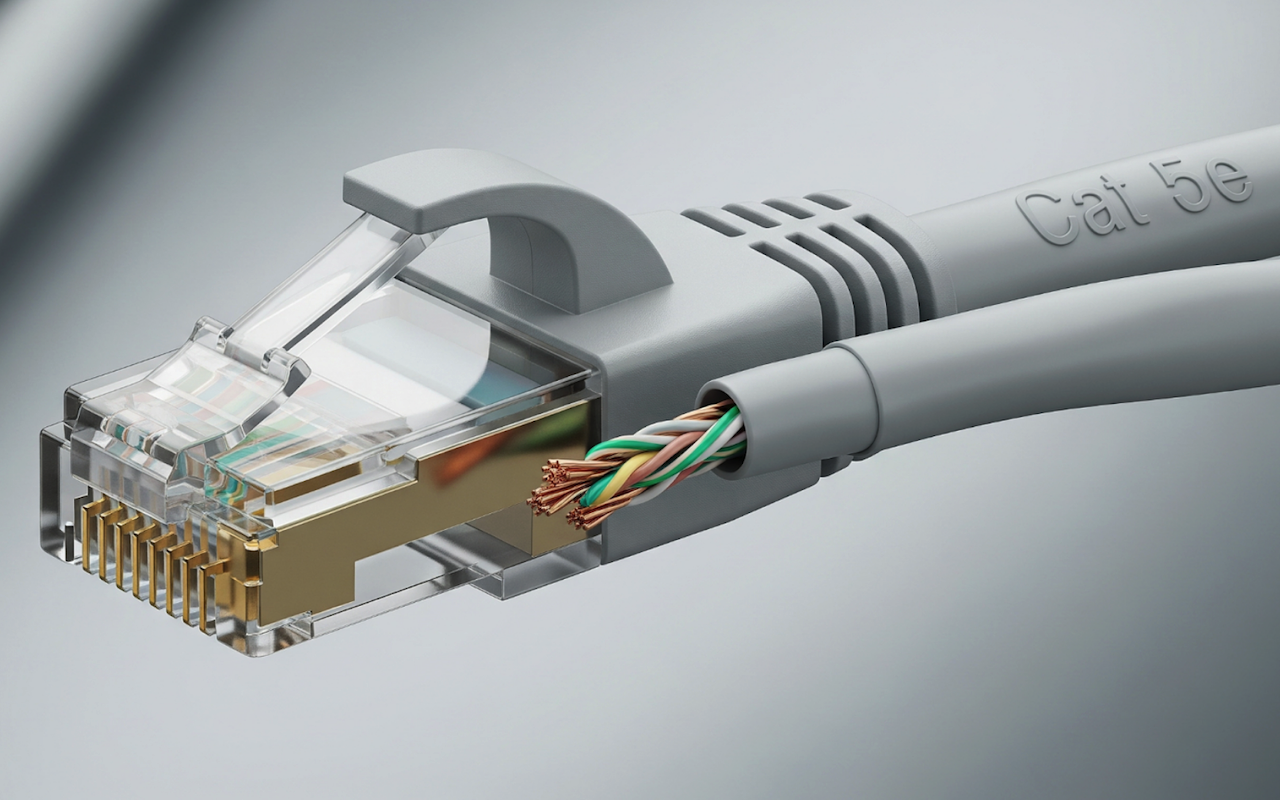
CAT 5e is one of the most common types of Ethernet cables in use today. Originating from CAT 5 wires, CAT 5e stands for the enhanced version of Category 5 Ethernet cable. It meets a wide range of home networking requirements and is also widely used in office environments. The cable provides excellent internet connectivity with speeds of up to 1 Gbps.
Additionally, it performs reliably in environments where crosstalk and electromagnetic interference are present. These are just a few of the key features of this cable. There’s much more to CAT 5e that you should know.
What is a CAT 5e Cable?
Category 5 enhanced cable, commonly known as Cat5e Ethernet cable, was introduced in the market in 2001. The cable is an upgraded version of the original CAT 5 version, which has better data transmission and can counter crosstalk in a better way. It has better data integration capacity, resulting in super-fast internet speed. It can smoothly run a LAN connection, securing connections between multiple devices like computers, modems, routers, etc.
Construction
Twisting Pair Technique
The CAT 5e Ethernet cable has a twisted pair design where four pairs of wires, usually made of copper, are twisted together. This twisted construction, in turn, helps in reducing both internal and external crosstalk.
Though the design of the wire seems critical because of the twisting technique used, the wires are duly color-coded, so that they can be identified easily during the installation process. This technique also helps in retaining internet signals over longer distances while reducing the external noise.
Copper Conductor
To prevent low transmission of data, copper conductors are used in a Cat 5e cable. Copper is highly conductive, and it helps in super-fast data transmission. Also, copper conductors ensure the longevity of the wire. Typically, ±0.005mm copper conductors are used for durability and high-speed transmission.
Type of Sheathing and Insulation
Every twisted wire has a superior insulation of polyethylene. This improves the flexibility of the wires, making it easier for installation. The wires become electrically isolated from each other, which in turn helps in reducing the crosstalk. Also, there is an outer layer or outer sheath made of either PVC (Polyvinyl Chloride) or LSZH (Low Smoke Zero Halogen). This outer sheath protects the cable from external physical damage and environmental factors. Sheathing and insulation techniques further improve the durability of the wire.
Shielding Techniques
The CAT 5e Ethernet cable is available in both types of options, UTP and STP. Unshielded Twisted Pair (UTP) Cat 5e cables do not include any external shielding. This type of wire suits domestic and office uses because there are fewer chances of direct outside exposure of the cable.
On the other hand, STP or shielded CAT 5e Ethernet wires use a foil braided shielding outside all the twisted copper wires. This makes the wires more durable and effectively reduces EMI.
Technical Specifications
To understand Cat 5e cables in detail, let's analyze their technicalities.
- The cable provides a relative frequency of 100 MHz maximum.
- The data transmission rate of CAT 5e wires is 1 Gbps per second.
- The 24 AWG copper conductor is used as a wire gauge.
- CAT 5e cable typically has a characteristic impedance of 100 Ohms (±15 %).
- The wire can transmit data signals up to 100 meters without using a router. After that, a router is used to transmit signals.
- It complies with most Ethernet protocols, including 10BASE-T, 100BASE-TX, and 1000BASE-T.
CAT 5e Ethernet Cable Technical Specifications Summary Table
| Parameters | Value |
|---|---|
| Standard Bandwidth | Up to 100 MHz |
| Data Transmission Rate | 1 Gbps (1000 Mbps) |
| Max. Segment Length of Wire | 100 m |
| Conductor Gauge | 24 AWG (0.51 mm) |
| Impedance | 100 Ω (±15%, 1–100 MHz) |
| Propagation Delay | 5.3 ns/m |
| Velocity of Propagation | 64–69% of the speed of light |
| Operating Temperature | -55°C to +60°C |
Applications
The CAT 5e cable is suitable for all kinds of home networking or LAN facilities. In some cases, small office networking setups can also be established using this cable. It can connect different computers, laptops, modems, routers, IP-based cameras, and other streaming devices. Wherever you need consistent internet support, you can use this Ethernet cable effortlessly.
How Does A CAT 5e Cable Work?
CAT 5e wires work by transferring high-frequency data in the form of electrical signals. The technology and design used for this twisted wire ensure superior data speed, reliable connection, and reduced crosstalk and interference. This wire has an easy installation process and its working procedure is very simple.
The CAT 5e Ethernet cable functions entirely depending on the twisted pairs of copper wires. The wires are color-coded so that they can easily be identified during the installation process.
Because of the twisting technique used in the wires, it minimizes crosstalk and EMI generated within and outside environments.
The data is converted into electrical signals and then transmitted through CAT 5e wires for smooth data transmission speed.
The four pairs of twisted copper wires use a full-duplex communication method for data transmission, which is a two-way communication method. It helps in bandwidth enhancement and data speed.
The cable supports up to 100 MHz data frequency easily. This also allows data transmission of 1 Gbps per second.
RJ45 connectors are attached to both ends of the cable, ensuring accurate alignment with the pins inside the network device it connects to.
Conclusion
The CAT 5e cable remains one of the most reliable solutions for modern internet needs in both home networks and workplaces. It was introduced as a major advancement in the networking industry and continues to hold its place today. Although its data transmission speed is limited to 1 Gbps and it may not fully support high-frequency applications such as large-scale video streaming or data center operations, it remains widely used. For more demanding tasks, upgrading to a newer Ethernet category is recommended. Still, CAT 5e stands out for its availability, cost-effectiveness, and ease of use, qualities that ensure it remains a trusted choice for users worldwide.
Share this post
Leave a comment
All comments are moderated. Spammy and bot submitted comments are deleted. Please submit the comments that are helpful to others, and we'll approve your comments. A comment that includes outbound link will only be approved if the content is relevant to the topic, and has some value to our readers.

Comments (0)
No comment